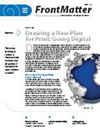The Puna Pastoralist System: A Coproduced Landscape in the Central Andes
IF 1.8
4区 环境科学与生态学
Q4 ENVIRONMENTAL SCIENCES
引用次数: 4
Abstract
In mountain socioecological systems, the interaction between nature and people is at the core of planning local long-term sustainable development strategies. Pastoralism is the main traditional socioeconomic livelihood in dryland mountains. It is strongly associated with long-established land use practices that provide essential material and relational contributions, both of which shape human populations and nature. The aim of this work is to characterize the traditional pastoralist system of the Puna (northwest Argentina) in a framework that highlights its diverse values and valuations within nature–people coproductions. We use the conceptual framework of the Intergovernmental Science–Policy Platform on Biodiversity and Ecosystem Services as a tool to analyze and understand these socioecological systems. We also identify 3 coproduction types at different steps of the benefit flow from ecosystems to quality of life. Pastoral livelihood persists in the Argentine Puna, cocreating a landscape with natural and anthropic (water sources, grasslands, wildlife, livestock, and techniques) elements interacting through complex mechanisms involving environmental conditions and cultural and economic practices. Some drivers that threaten the system's sustainability are overexploitation and land use change. These are visible as poaching or conversion of pasturelands into mining areas. Finally, we identify a number of knowledge gaps. These include lack of information on some regulatory contributions of nature to people, biodiversity status, and trends and statistical information on Indigenous Peoples and local communities; the flow of relationships; and coproductions related to the local expression of the quality of life. We also highlight the need for spatially explicit information and comprehensive knowledge of drivers and socioecological dynamics of the landscape.普纳牧区系统:安第斯山脉中部共同生产的景观
在山区社会生态系统中,自然与人的互动是规划当地长期可持续发展战略的核心。畜牧业是旱地山区主要的传统社会经济生计。它与长期确立的土地利用实践密切相关,这些实践提供了重要的物质和关系贡献,这两者都塑造了人类和自然。这项工作的目的是在一个框架内描述普纳(阿根廷西北部)的传统牧民制度,突出其在自然-人的共同生产中的不同价值观和估价。我们使用生物多样性和生态系统服务政府间科学政策平台的概念框架作为分析和理解这些社会生态系统的工具。我们还确定了从生态系统到生活质量的利益流的不同阶段的3种共同生产类型。在阿根廷普纳,牧民的生计依然存在,通过涉及环境条件、文化和经济实践的复杂机制,自然和人文(水源、草原、野生动物、牲畜和技术)元素相互作用,共同创造了一个景观。一些威胁该系统可持续性的驱动因素是过度开发和土地利用变化。这些都是偷猎或将牧场转变为矿区。最后,我们确定了一些知识差距。其中包括缺乏关于自然对人类的一些监管贡献、生物多样性状况以及土著人民和当地社区的趋势和统计信息的信息;关系的流动;以及与当地生活质量表达有关的合作制作。我们还强调需要空间上明确的信息和对驱动因素和景观社会生态动态的全面了解。
本文章由计算机程序翻译,如有差异,请以英文原文为准。
求助全文
约1分钟内获得全文
求助全文
来源期刊
CiteScore
3.10
自引率
18.80%
发文量
36
审稿时长
4.5 months
期刊介绍:
MRD features three peer-reviewed sections: MountainDevelopment, which contains “Transformation Knowledge,” MountainResearch, which contains “Systems Knowledge,” and MountainAgenda, which contains “Target Knowledge.” In addition, the MountainPlatform section offers International Mountain Society members an opportunity to convey information about their mountain initiatives and priorities; and the MountainMedia section presents reviews of recent publications on mountains and mountain development.
Key research and development fields:
-Society and culture-
Policy, politics, and institutions-
Economy-
Bio- and geophysical environment-
Ecosystems and cycles-
Environmental risks-
Resource and land use-
Energy, infrastructure, and services-
Methods and theories-
Regions

 求助内容:
求助内容: 应助结果提醒方式:
应助结果提醒方式:


